A fascinating look at the history of twelve Revolutionary War women who, when it comes to bravery, have shown up their male counterparts.
The American Revolution was fought on the homefront, which means that women and children were often caught up in the fighting in one way or another. It was their war, too. Remember Rosie the Riveter? She symbolizes the women who worked in the factories and ran the family farms and shops while men were away fighting in WWII.
And there were many women just like Rosie in the Revolutionary War, too. A group of Philadelphia women held the first-ever fundraiser in America; they raised much-needed funds for General George Washington’s Continental Army. Less political wives and mothers even pitched in to sew the army’s uniforms. But some women felt a stronger call of duty; they are the badass women of the Revolutionary War. We begin with a short primer on the art of spycraft in the era:
Then there were the spies, scouts and messengers. Women were useful in that capacity because they were often considered to be above suspicion. Frankly, men of the era usually assumed that women weren’t very bright, which gave them opportunities to listen in on secret meetings. They could also use feminine wiles, disguises, and other ruses to carry out their covert actions. A few members of Gen. Washington’s Culper Spy Ring, operating out of Long Island, were women.
Among them were Anna Strong and the unnamed Agent 355. Both names could have come straight out of a James Bond film, but I assure you, this was real life. And death: many historians believe that Agent 355 was caught by the British and died on their fetid prison ship Jersey after giving birth to a son.
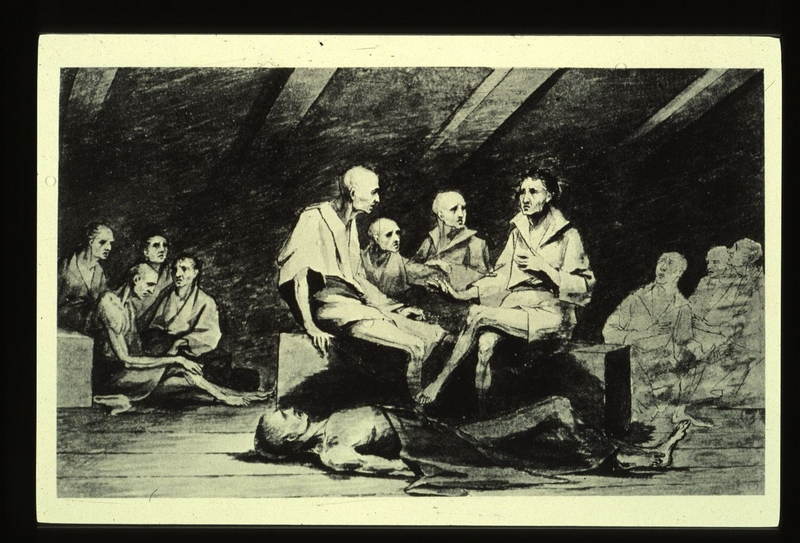
The interior of the British prison ship Jersey, moored in New York Harbor.
Badass Revolutionary War Women: Anna Strong
Anna Strong would pass on vital information via her clothesline. If she pinned her black petticoat on the line, it would signal to Abraham Woodhull, a fellow Culper Spy, that his contact was in town.
Six boats were moored near her home; the number of white handkerchiefs hanging on the line would tell Woodhull in which boat his contact was waiting. This signal system is mentioned in an ad for the television show about the Culper Spy Ring, TURN, which premiered on AMC in April 2014.
Badass Revolutionary War Women: Lydia Darragh
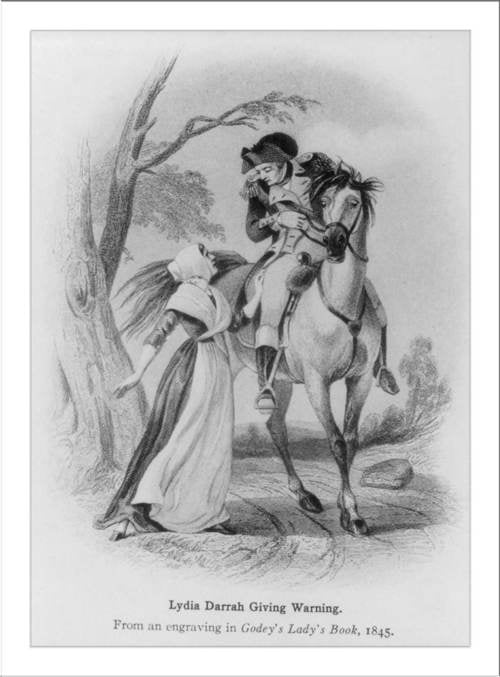
A 19th century engraving depicting Lydia passing on her information to an American officer.
One night, British troops marched into Lydia Darragh’s Philadelphia home and knocked on her door. They forced her to let them use her house to hold a meeting. Troops ordered Darragh to make sure her family was all asleep, and to go to bed herself, but the defiant female crept downstairs and listened in on the meeting instead.
Good thing she did: the British army was planning a surprise attack on Washington’s men. The next day, without a word to anyone, she left her home alone and passed along the information to an American officer at a local tavern. As a result of her bravery, Gen. Washington was ready and able to fight off the advancing British.
Catherine “Kate” Moore Barry
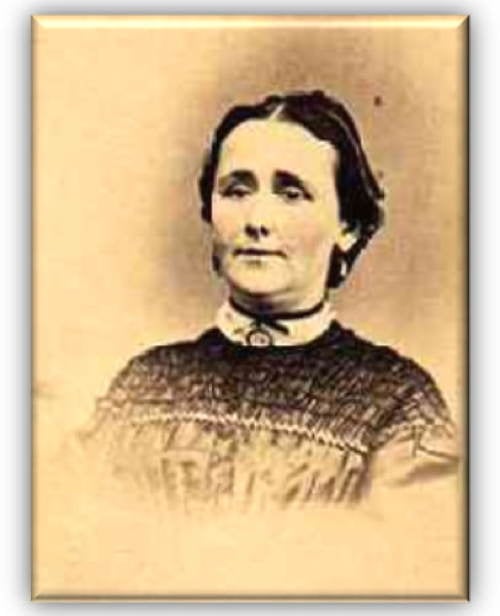
Source: Citadel
Catherine “Kate” Moore Barry knew the backwoods of South Carolina well. She became a scout for the Continental Army and would often ride her horse to their encampment to relay news. When the Battle of Cowpens began, there weren’t enough men on the colonists’ side. So Kate rode her horse through the backwoods, rounding up any roving bands of patriots she could find. Thanks in large part to her efforts, the Continental Army beat the British at Cowpens.
Sybil Ludington
Paul Revere can’t hold a candle to Sybil Ludington. When no men were available, this sixteen-year-old girl rode her horse 40 miles to warn the Continental Army that the British had just set Danbury, Connecticut, ablaze. She left her home at about 9 pm and returned at dawn the following day.
By contrast, Paul Revere only rode for three hours before being intercepted by British troops. Gen. Washington even dropped by her house after the battle at Danbury to thank her. In 1975, the US Postal Service created a stamp in her honor. For more, watch as, inexplicably, a biker tells you the tale.
Emily Geiger
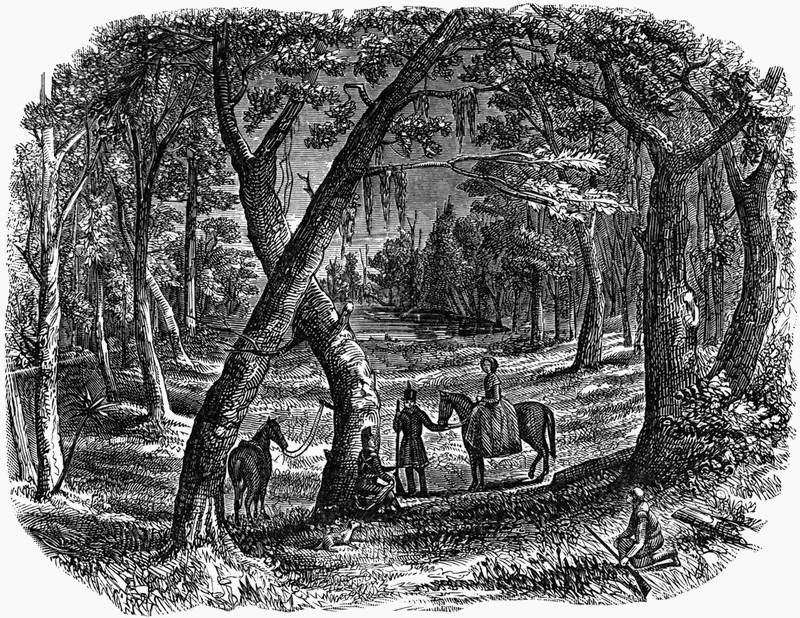
But Sybil didn’t travel nearly as far as eighteen-year-old Emily Geiger, who volunteered to take a written message from Commander Nathanael Greene to General Thomas Sumter, 100 miles from her home. She rode through an area filled with British sympathizers and soldiers.
She was caught and detained while a woman could be found to search her–it was improper for a man to touch a woman in this way. While she waited, she memorized Greene’s note, tore it up, and swallowed every piece. She was released and completed the two-day ride, delivering the message from memory to Gen. Sumter. She has been memorialized on South Carolina’s state seal.
Badass Revolutionary War Women: Anna Maria Lane
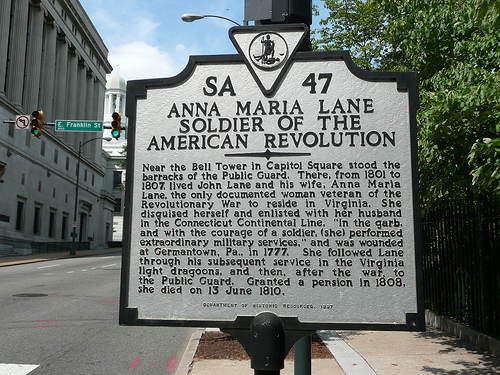
Source: Static Flickr
Groups of women called “camp followers” cooked the soldiers’ meals and washed their laundry at each encampment, often just to be near their husbands. Anna Maria Lane couldn’t stand to see her husband leave to join the army, so she became a camp follower. Then at the Battle of Germantown, for reasons known only to her, she donned a uniform and joined the fray alongside her husband. A wound she sustained in the battle crippled her for the rest of her life.
Many years later, she and her husband joined a group of Revolutionary War veterans to ask the Virginia government for a pension. Men who fought that day received $40 per year. But the General Assembly gave Lane a yearly pension of $100 for her extraordinary service.
Badass Revolutionary War Women: Deborah Sampson
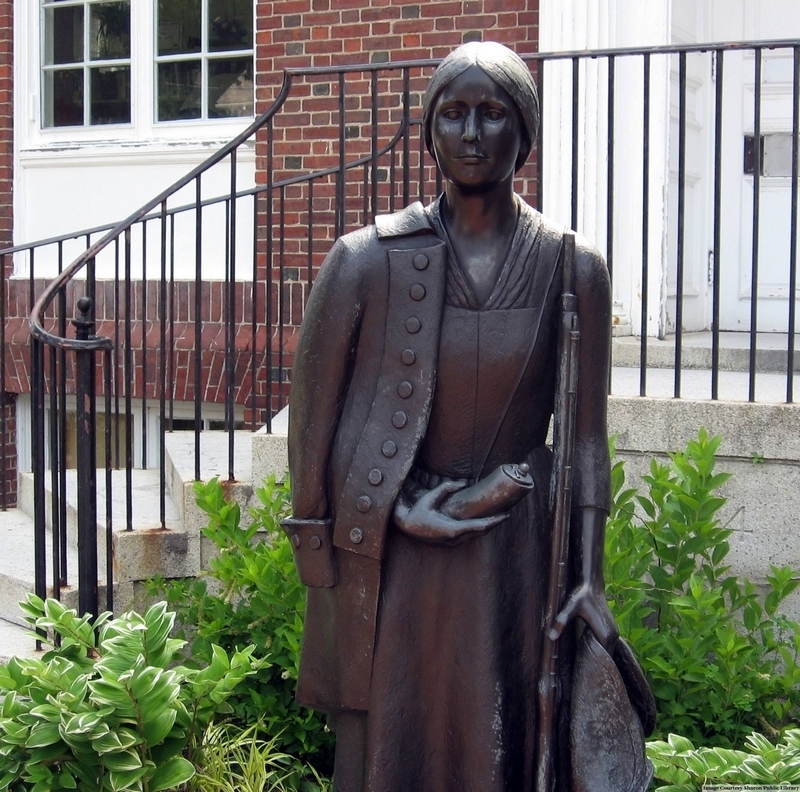
A statue of Deborah Sampson in Sharon, Massachusetts. Source: Monuments And Memorials
The women who physically fought during the war are the most interesting of all. For obvious reasons, Anna Maria Lane never officially joined the Continental Army. No woman could at the time, so instead they dressed as teenage boys, using invented or borrowed male names in order to enlist. That’s how Deborah Sampson became a Continental soldier named Robert Shurtlieff. She fought in several battles and was wounded near the groin. Rather than face a doctor and be found out, she dug the bullet out of her own leg.
Later, when she fell ill and lost consciousness, a doctor’s examination revealed her secret. The doctor wrote to General Peterson to pass on this news when Deborah returned to her ranks. She was given an honorable discharge and later became the first woman to tour America on the lecture circuit. After her death, her husband became the first man to receive a widow’s pension.
Badass Revolutionary War Women: Mammy Kate
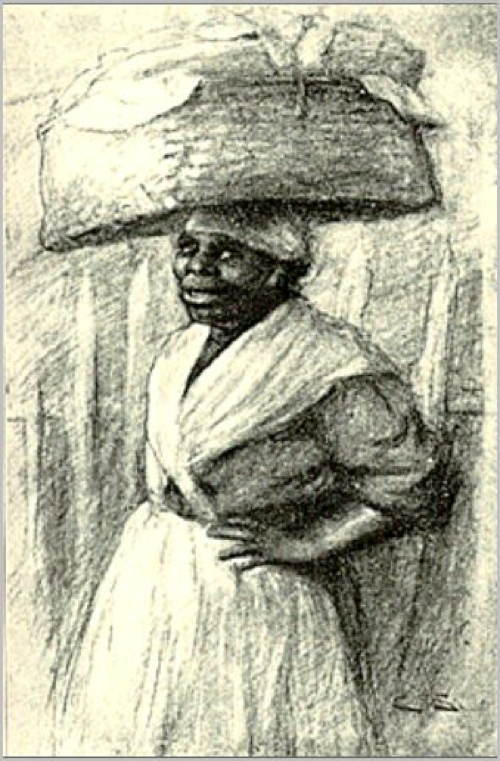
An artist’s rendering of Mammy Kate with her big linen basket.
And then there were the plain old badass women. Mammy Kate was a devoted slave to the future governor of Georgia, Stephen Heard. When he was taken by the British and given a death sentence, Mammy Kate walked 50 miles to his prison.
She got past the guards by telling them she was there to care for him. She was even allowed in his cell, where she placed him–he was a small man–in a large linen basket under a pile of sheets. A tall, muscular woman, she carried him out of the prison disguised as laundry. As a thank you, he freed her, but she refused to leave his side and remained with him and his family until her death.
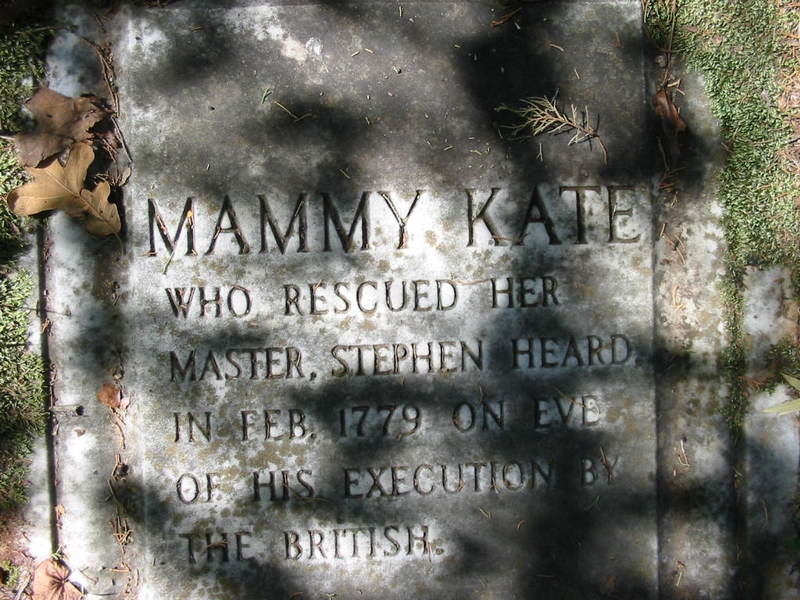
Mammy Kate’s heroic deed proudly carved on her gravestone. Source: Georgia Society Star
Badass Revolutionary War Women: Nancy Hart
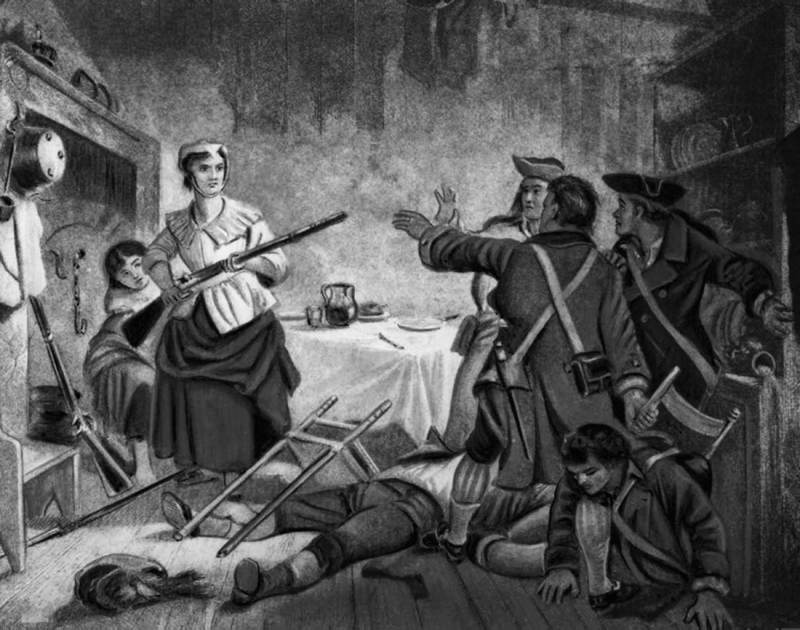
Nancy Hart shooting British soldiers in her home.
Some women were so patriotic that they were up for anything that would bring their fledgling nation freedom from British tyranny. Nancy Hart worked as a spy but the incident for which she is best remembered is a hell of a lot juicier. Six British soldiers showed up at her home on the Georgia frontier one day, killed her one remaining turkey, and demanded that she cook it for them. She agreed, also giving them corn liquor and wine to get them good and drunk, then quietly sending her young daughter to fetch the girl’s father who was working out in the field.
Nancy began to steal the men’s guns and feed them through a hole in the wall. She was going for the third when she was caught. Grabbing the gun from the soldier, she aimed it at them and warned that she’d shoot anyone who came toward her. They didn’t believe her. One man lunged for the gun; she shot him dead. Another tried, she wounded him.
Then Nancy, her husband, and their neighbors hung the surviving men from a tree. Some historians believed the story to be a folk tale until six bodies in tattered British uniforms were discovered buried on the site of Nancy’s old homestead in 1912.
Badass Revolutionary War Women: Martha Bratton
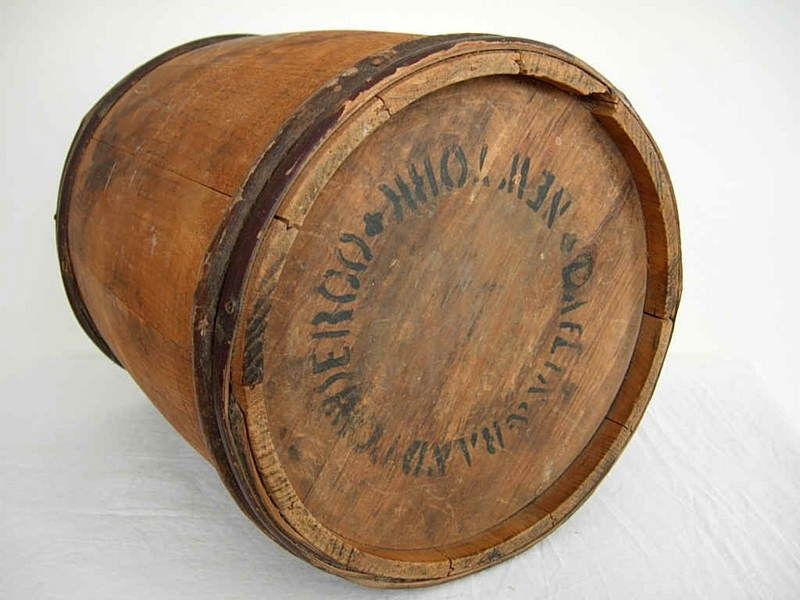
A Laflin & Rand powder keg, typical of the Revolutionary War era.
Martha Bratton’s husband joined the Continental Army and left her to guard a storehouse on their property that happened to be full of gunpowder. The British were tipped off and made their way to seize it.
When Martha caught wind of their plot, she had no time to hide the gunpowder. So she blew up the storehouse instead. When the enraged British demanded to know who had done this, she didn’t mince words: “It was I who did it…Let the consequence be what it will, I glory in having prevented the mischief contemplated by the cruel enemies of my country.”
Badass Revolutionary War Women: Prudence Wright
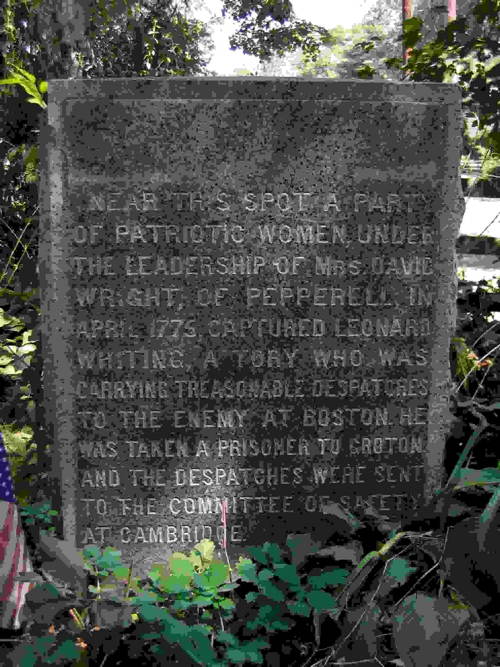
A memorial stone near the bridge commemorates Prudence Wright’s heroic deed. Source: Pepperell Covered Bridge
And finally, when Prudence Wright learned that some British sympathizers, often called Tories, were coming through her town of Pepperell, Massachusetts, she gathered about 40 women to fend them off. They dressed in men’s clothing and took whatever weapons they could find–some even brought pitchforks–and hid on Jewett’s bridge outside of town. When two riders came by, the “minutewomen” stopped them.
One was a known Tory named Leonard Whiting and the other was Prudence’s brother, Samuel, a British sympathizer himself. When Whiting moved to fight the women, Samuel stopped him, saying, “I recognize Pru’s voice, and she would wade through blood for the rebel cause.” The women were right to be suspicious; when they took the men into custody, they discovered messages to British troops in their pockets.





